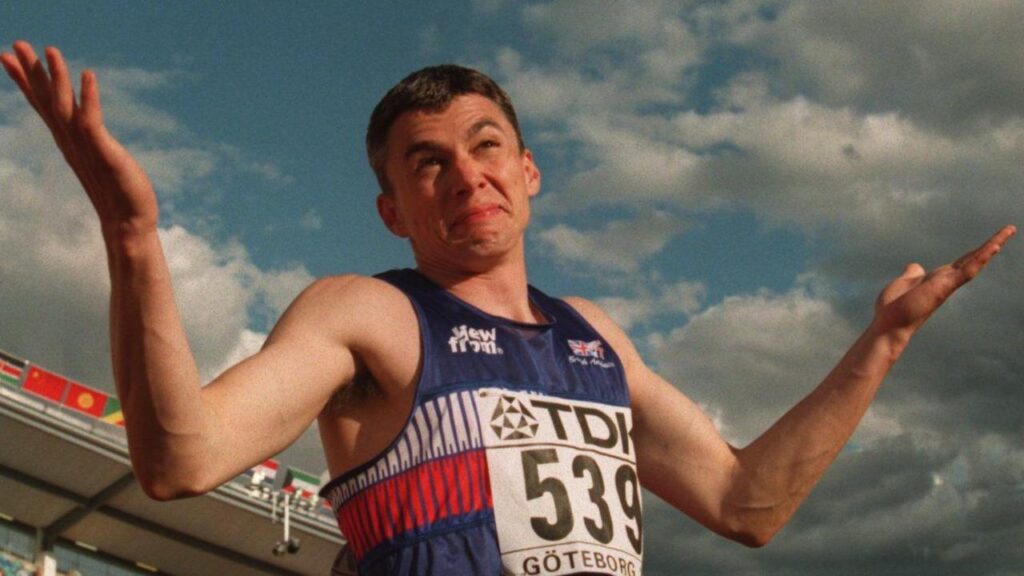The world record held by Jonathan Edwards for the triple jump remains unbroken for an astonishing thirty years. Set on August 7, 1995, during the World Championships in Gothenburg, Edwards’s record of 18.29 meters stands out prominently in the annals of athletics. While he takes pride in the achievement, Edwards expresses a sense of concern regarding the implications of such a long-standing record for the sport itself. In an interview with BBC Sport, he remarked, “I don’t think it’s a good sign for athletics as a sport that you have a record that stands for 30 years.”
Edwards highlighted that despite the advancements in sports science, nutrition, and training methods, the failure to surpass his record raises questions related to the health and vitality of athletics as a sport. He is the only British track and field athlete to hold a world record in regular events, having observed that just seven other men have managed to leap beyond the 18-meter mark throughout history. He suggests that if records are indeed meant to be broken, then the endurance of his record is troubling, reflecting on the stagnation of achievement within the discipline.
During the Gothenburg competition, Edwards was determined to prove his prowess. He had entered with a prior world record of 17.98 meters, having recently surpassed Willie Banks’ previous mark, and recorded a wind-assisted 18.43 meters. In his opening jumps, he cleared the 18-meter threshold twice, achieving a resounding 18.16 meters, followed shortly by the record-setting leap. His performance was characterized by a revolutionary technique involving a double arm action that provided enhanced balance throughout his jumps. Strikingly, Edwards identified himself as a sprinter rather than merely a jumper, showcasing his unique approach to the triple jump.
Despite his historic performance, Edwards admits to facing competitive anxiety, revealing that he was so apprehensive on the day of the competition that he bought sunglasses merely to mask his nerves. His competitors, however, viewed him as a figure to be both feared and revered. Previous competitors, such as Jerome Romain, who secured the bronze medal in Gothenburg, remembered how they meticulously studied Edwards’s jumps, reinforcing his impact on the sport.
For Edwards, conditions in athletics have changed over the years. He stresses a disconnect between the growth of professional sports and athletics, claiming it does not offer the same financial incentives as other areas where gifted athletes may pursue careers. He contextualizes this by noting how the recent debut of Michael Johnson’s Grand Slam Track event, which offers substantial prizes exclusively for track races, highlights a disparity in rewards for events like the triple jump.
Investment in athletics has also witnessed a decline, with organizations like UK Sport announcing reduced funding for upcoming Olympic cycles. This financial strain further exacerbates challenges in participation rates, especially among youth, indicating that fewer young athletes are choosing to enter the sport as viable career paths.
Regarding technological advancements in sports equipment, Edwards conveys skepticism about the impact of contemporary running shoes. Although these shoes are said to enhance performance in running events, he speculates that the benefits may not extend to jumping disciplines. With experts agreeing that the potential advantages of carbon fiber technology in footwear may not significantly influence jump outcomes, the question remains: why haven’t records been broken despite advancements?
The competitive landscape currently reflects the record-setting realm, with the closest attempt made by American athlete Christian Taylor, who jumped 18.21 meters a decade ago. The present world-leading distance is 17.80 meters, while the previous year’s Olympic gold was achieved at a distance of 17.86 meters. Edwards humorously states that he may not know how he will feel upon the eventual breaking of his record, as it has been a substantial part of his identity throughout his life. He concludes with a whimsical remark, suggesting it would be fitting to commemorate his record in some manner during what he jokingly termed could be his “funeral.” Ultimately, the endurance of Edwards’s record prompts a deeper examination of athletics in a modern context, revealing both its historical significance and contemporary challenges.











